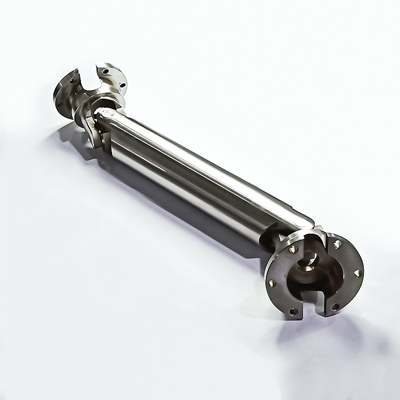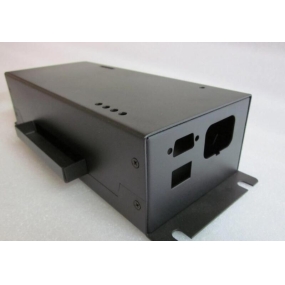Precision machining can be divided into four categories: tool cutting, abrasive machining, special machining, and composite machining.
With the development of processing technology, many new processing mechanisms have emerged, especially in precision machining, especially in microfabrication. Secundo formatorium mechanismum et characteres parterum. In tres categorias divisa est: removal processing, combination processing, and deformation processing. Removal processing, also known as separation processing, is the use of force, heat, electricity, light and other processing methods to remove a portion of material from a workpiece, such as cutting, grinding, electric machining, etc. Combined processing is the use of physical and chemical methods to attach (deposit), inject (infiltrate), and welded a layer of different materials on the surface of the workpiece, i such as electroplating, vapor deposition, oxidation, carburizing, bonding, welding, etc. Deformatio procedura est fortis, calore, molecular is motus, et alios modos opera deformare, dimensionem, formam et proprietatem eius variare, sicut casting, forging etc.
The concept of visible processing has broken through traditional removal processing methods, with characteristics such as stacking, growth and deformation, while emphasizing surface treatment, forming surface processing technology.
 Compared with chip free technology, etc. the advantages of precision machining (cutting) are first that it has a high material removal rate and good economy. Exemplo, hoc verum est in comparatione cum technologia laser plasma processationis; Hoc est, quia hoc processus solum potest altum substantiam removationem temporem accipere per magnam quantitatem energiae nunc. On the other hand, there are still issues with whether the processed works can meet the requirements for dimensional and shape accuracy. Chip free pressure machining is mainly used for large-scale production, often requiring subsequent cutting to obtain the final qualified workpiece shape. Pro hoc, prima avantia machinae mechanicae (cutting) est quod altum precision opus possit attingere.
Compared with chip free technology, etc. the advantages of precision machining (cutting) are first that it has a high material removal rate and good economy. Exemplo, hoc verum est in comparatione cum technologia laser plasma processationis; Hoc est, quia hoc processus solum potest altum substantiam removationem temporem accipere per magnam quantitatem energiae nunc. On the other hand, there are still issues with whether the processed works can meet the requirements for dimensional and shape accuracy. Chip free pressure machining is mainly used for large-scale production, often requiring subsequent cutting to obtain the final qualified workpiece shape. Pro hoc, prima avantia machinae mechanicae (cutting) est quod altum precision opus possit attingere.
Precision machining "style=" font family: Exspectans lineam; font-size: 14px; white-space: normal; Mechanical processing is widely used, especially with the trend of small batch production, which requires higher precision in the shape and size of workpieces, opening up new and wider fields for mechanical processing. Using a lathe naturally requires various turning processes, but it should also be noted that drilling, milling, grinding, and gear cutting can all be completed on one lathe (process integration), which is the trend of the composite machine tool of the developed turning and milling machining center.
 The technical difficulty of precision machining is high, and with multiple influencing factors, wide coverage, high investment intensity, and strong product personality. Its main contents include the following five aspects:
The technical difficulty of precision machining is high, and with multiple influencing factors, wide coverage, high investment intensity, and strong product personality. Its main contents include the following five aspects:
1.1 Processing mechanism. In addition to the precision of traditional processing methods, non-traditional processing (special processing) methods have developed rapidly. In hoc tempore, modi machinae tradicionalis prima sunt precision cuto cum instrumentis diamantes cuto, precision grinding cum rotis pulveris diamantes micro pulveris grinding, precision velocitate cuto, et calciamento harena precision grinding; Non traditional processing methods mainly include high-energy beam processing such as electron beam, ion beam, laser beam, electrical discharge, electrochemical processing, photolithography (etching), etc. And composite processing methods such as electrolytic grinding, magnetic grinding, magnetic fluid polishing, and ultrasonic honing with composite processing mechanisms have emerged. The study of machining mechanism is the theoretical basis and growth point of new technologies for precision and ultra precision machining.
1.2 Materiales procedentes. The processed materials of precision machining have strict requirements in terms of chemical composition, physical and mechanical properties, chemical properties, and processing properties. They should have uniform texture, stable performance, and no macroscopic or microscopic defects both externally and internally. Solo materiales processi qui meet performance requirements can achieve the expected results of precision machining.
1.3 Processing equipment and process equipment. Precisionibus machinis alta precision, alta stiffnessa, alta stabilitate, et instrumenta automata, correspondentia instrumenta cutationis diamantes, instrumenta cutationis cubicae nitridae nitridae, rotae grinding diamantes, rotae nitridae cubicae grinding, et correspondentia alta precision, alta stiffnessa fixturas et altera instrumenta procedentiae ad optimum qualitatem machinae.
1.4 Testing. Precision machining must have corresponding testing techniques to form an integrated processing and testing system. Tres metodes sunt ad detectionem machinarum precision: offline detection, in-situ detection, et online detection.
1.5 Working environment. Precision machining requires working in a certain environment to achieve technical parameters in terms of accuracy and surface quality. The working environment conditions mainly include requirements for temperature, humidity, purification, and vibration prevention, as well as special requirements for noise, light, static electricity, electromagnetic radiation, and other aspects.


 English
English Spanish
Spanish Arabic
Arabic Portuguese
Portuguese Belarusian
Belarusian Japanese
Japanese Russian
Russian Icelandic
Icelandic Bulgarian
Bulgarian Azerbaijani
Azerbaijani Estonian
Estonian Irish
Irish Polish
Polish Persian
Persian Boolean
Boolean Danish
Danish German
German French
French Filipino
Filipino Finnish
Finnish Korean
Korean Dutch
Dutch Galician
Galician Catalan
Catalan Czech
Czech Croatian
Croatian Latvian
Latvian Romanian
Romanian Maltese
Maltese Malay
Malay Macedonian
Macedonian Norwegian
Norwegian Swedish
Swedish Serbian
Serbian Slovak
Slovak Slovenian
Slovenian Swahili
Swahili Thai
Thai Turkish
Turkish Welsh
Welsh Urdu
Urdu Ukrainian
Ukrainian Greek
Greek Hungarian
Hungarian Italian
Italian Yiddish
Yiddish Indonesian
Indonesian Vietnamese
Vietnamese Haitian Creole
Haitian Creole Spanish Basque
Spanish Basque








